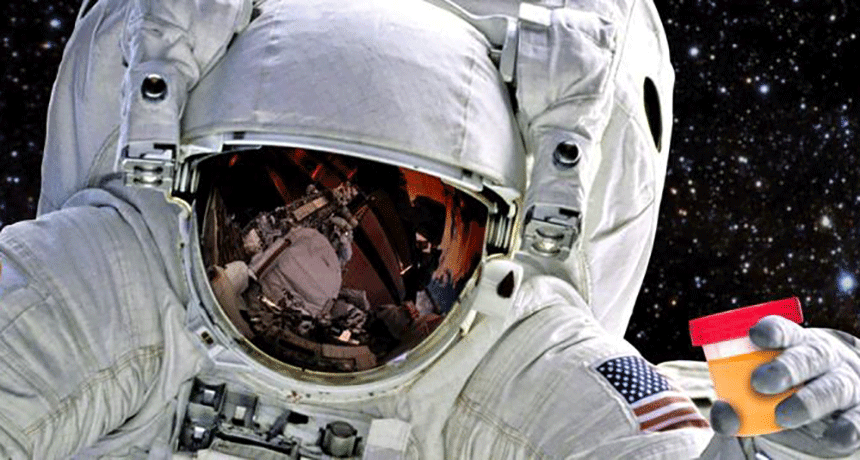Author: Kathiann Kowalski / Source: Science News for Students

Washington, D.C. — Pee on a spaceship seems like a problem, not a solution. But someday astronauts’ urine could become food for genetically engineered yeast. And the breaths these space travelers exhale could be used to help those yeast cells work like tiny factories.
They might churn out the ingredients used to make plastics. Or they could become the raw materials for nutrient supplements that keep astronauts healthy. Each might help humans survive on a trip to Mars or beyond.The International Space Station already recycles urine. Systems on the station remove nitrogen compounds and other chemicals. What emerges is clean water that astronauts then drink. Mark Blenner now wants to take that same nitrogen from urine and feed it to his yeast.
Blenner is a chemical engineer at Clemson University in South Carolina. He talked about how pee could become plastic at the American Chemical Society’s 2017 fall national meeting in Washington, D.C.
Little factories

Yeast is a kind of single-celled fungus. One yeast species is famous for making bread rise and for helping brew beer. But there are more than a thousand other species. The yeast Blenner wants to send into space is called Yarrowia lipolytica (Yahr-OH-wee-uh LIP-oh-LIT-ih-kuh). Its cells are like little factories that make chemicals called lipids. These greasy molecules include fatty acids, oils and waxes.
The yeast uses its lipids to store energy. When the yeast needs that energy later, it chops the chemicals into smaller chunks.Scientists have tinkered with the yeast’s genes. The changes they made to its genetic code can coax these cells to make new chemicals. Humans can then use these molecules to create things they need.
A couple of years ago, Blenner’s group and a team at the University of California, Riverside did this with a tool called CRISPR. That process can snip out one bit of DNA and substitute another. It’s like cutting and pasting passages within a cell’s chemical-instruction book. The researchers wrote about that work in ACS Synthetic Biology in 2016.
Instead of their natural lipids, some engineered strains of the yeast could make…
The post Human waste could power plastic-making in space appeared first on FeedBox.